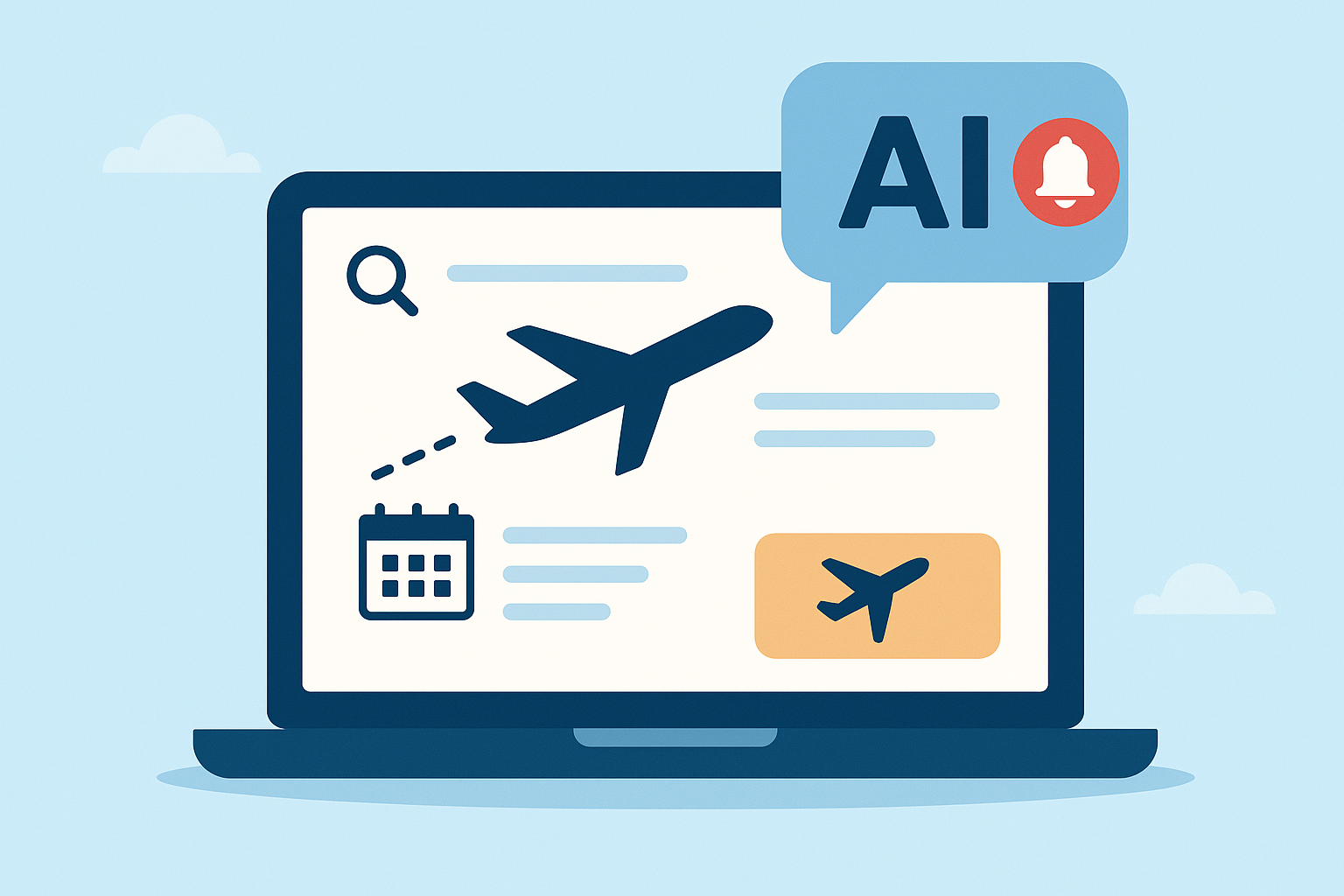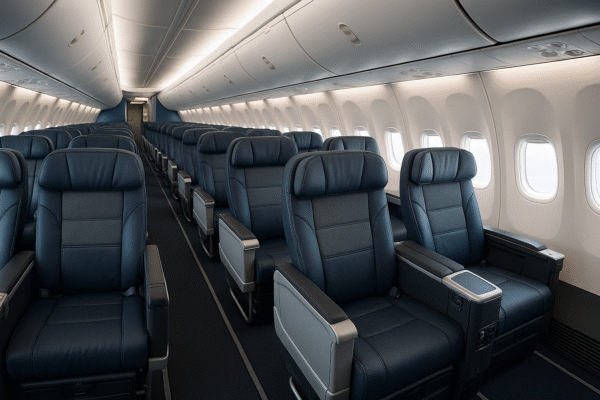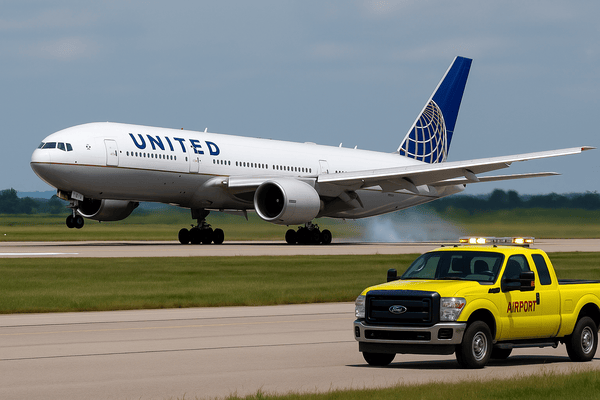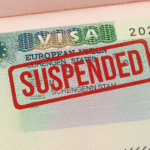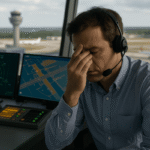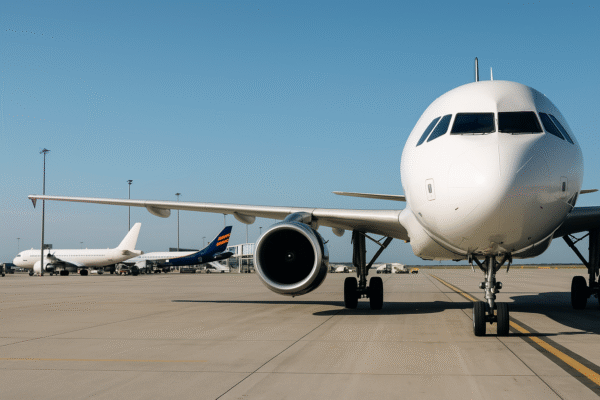In a high-stakes incident that rippled across the global travel network, United Airlines Flight UA917, en route from San Francisco International Airport (SFO) to Auckland, New Zealand, was forced to turn back just two hours into its transpacific journey after declaring a mid-air medical emergency.
The flight, operated by a 26-year-old Boeing 777-200ER, issued a Squawk 7700 emergency code while cruising over the Pacific Ocean, prompting immediate coordination with air traffic controllers and ground emergency services. At approximately 3:50 a.m. Pacific Time, the long-haul aircraft executed a priority landing at SFO’s runway 28L, safely returning all passengers and crew to U.S. soil.
Emergency Diverts Long-Awaited Transpacific Journey
What was intended to be a 14-hour flight connecting North America to the South Pacific turned into a tense airborne ordeal. Passengers had just settled in for the overnight journey when an onboard medical emergency prompted swift action from the flight crew.
As the aircraft reversed course, emergency responders mobilized at SFO, ensuring that medical care and passenger support were ready upon landing. The incident occurred amid peak winter travel for New Zealand, further compounding the impact of the disruption for both leisure and business travelers.
Operational Ripple Effects Across the Globe
The disruption caused by the diversion extended beyond a single flight. With Flight UA917 acting as a crucial link between California and Oceania, its unexpected return reverberated across:
- New Zealand hotel bookings and car rentals
- Connecting flights to Australia and the South Pacific
- Group tours and cruise departures from Auckland
- Travel insurance claims for missed services
As United Airlines worked to reschedule the departure, initially targeting an 8:00 a.m. relaunch, passengers were left scrambling to contact hotels, tour operators, and family members awaiting them on the other side of the Pacific.
Passengers Caught in Uncertainty
For those on board, the abrupt reversal was both emotionally and logistically challenging. Many travelers had planned multi-leg international itineraries, with tight layovers in Auckland and additional destinations such as Fiji, Sydney, or Queenstown.
Passengers reported mixed emotions—relief at the safe return and frustration at the ensuing travel chaos. Some expressed concern over insufficient communication during the incident, while others praised the flight crew for managing the emergency with professionalism and calm.
Aircraft Age Sparks Discussion Amid Safety Focus
Although the emergency was medical in nature, the incident has brought attention to the age of the aircraft involved. The Boeing 777-200ER, while still considered a workhorse for long-haul operations, is 26 years old, leading to renewed conversations around:
- Aircraft reliability on ultra-long-haul routes
- Medical preparedness on flights lasting over 12 hours
- Emergency landing alternatives over oceanic airspace
Aviation experts noted that mid-air emergencies—though rare—can occur regardless of aircraft age, and that the pilot’s swift response adhered to global aviation safety protocols.
SFO Emergency Response Earns Praise
The efficient handling of the emergency by San Francisco International Airport staff was widely acknowledged. From runway clearance to medical support, the airport demonstrated its capacity to manage high-pressure, last-minute diversions without disrupting ongoing operations.
Still, the event highlighted the fragile balance international hubs must maintain when responding to unexpected aircraft returns, especially in the early morning hours when gate capacity and staffing can be constrained.
Travel Industry’s Real-Time Response
Following the incident, Tourism New Zealand, hotel chains in Auckland, and travel insurance providers immediately activated flexible booking policies and expedited claim processing. Affected passengers were advised to check for:
- Compensation under United Airlines’ delay policies
- Hotel rebookings and airport transfer changes
- Refunds or credit vouchers for missed tours and activities
Travel insurance companies, too, have seen a surge in emergency claims and inquiries related to flight interruptions, underlining the ongoing importance of comprehensive coverage for long-haul journeys.
A Reminder of Global Travel Vulnerability
As international air travel rebounds in 2025 following years of pandemic-era disruption, incidents like the UA917 emergency serve as stark reminders of how interconnected and fragile global aviation systems remain.
With flights operating at near-full capacity and tight international schedules, a single flight diversion can ripple through entire regional tourism economies. The UA917 event exposed vulnerabilities in contingency planning and emphasized the need for:
- Improved passenger communication
- Stronger inter-airline coordination
- Greater resilience in itinerary recovery
Conclusion: Safe Landing Amid Turbulent Logistics
While the safe return of United Airlines Flight UA917 to San Francisco is a testament to aviation preparedness and flight crew professionalism, the ripple effects of the emergency stretch far beyond the cockpit.
As travelers regroup and the airline prepares for a rescheduled departure, the incident stands as a powerful case study in how health, safety, logistics, and emotion converge in the high-stakes world of international air travel.
The skies may have cleared for now, but for passengers, tourism boards, and airline operators alike, UA917’s return is a wake-up call to ensure that when emergencies arise, speed, transparency, and empathy remain the industry’s guiding principles.
For more travel news like this, keep reading Global Travel Wire

